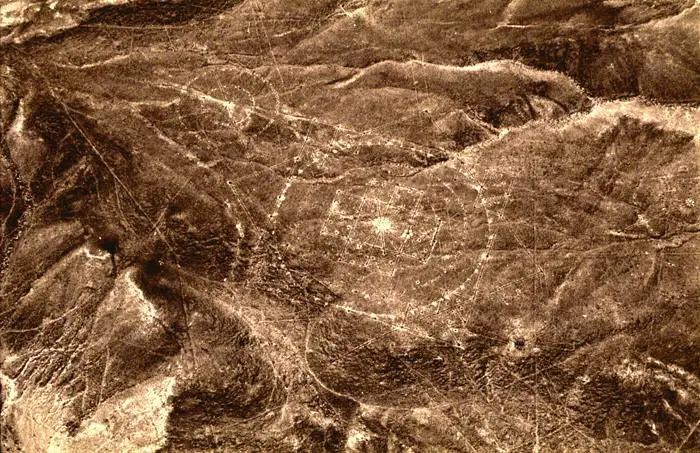The Vera Rubin Observatory (VRO) is different to other large telescopes, and that difference makes it more vulnerable to space junk. Other telescopes, like the Giant Magellan Telescope and the European Extremely Large Telescope, focus on distant objects. But the VRO’s job is to repeatedly image the entire available night sky for 10 years, spotting transients and variable objects. …read more […]
|
|
||
|
Although the exact nature of dark matter continues to elude astronomers, we have gained some understanding of its general physical properties. We know how it clusters around galaxies, how it makes up much of the matter in the universe, and even how it can interact with itself. Now a recent study, appearing on the pre-print server arXiv, looks at just how fast dark matter can move. …read more […] A team of astronomers, led by Arizona State University Assistant Research Scientist Tim Carleton, has discovered a dwarf galaxy that appeared in James Webb Space Telescope imaging that wasn’t the primary observation target. …read more […] There has been significant progress in the field of quantum computing. Big global players, such as Google and IBM, are already offering cloud-based quantum computing services. However, quantum computers cannot yet help with problems that occur when standard computers reach the limits of their capacities because the availability of qubits or quantum bits, i.e., the basic units of quantum information, is still insufficient. …read more […] The GRAPES-3 experiment in Ooty, India, operated by the Tata Institute of Fundamental Research has discovered a new feature in the cosmic-ray proton spectrum at about 166 tera-electron-volt (TeV) energy while measuring the spectrum spanning from 50 TeV to a little over 1 peta-electron-volt (PeV). The observed feature suggests a potential re-evaluation of our understanding of cosmic-ray sources, acceleration mechanisms, and their propagation within our galaxy. …read more […] High pressure has revealed surprising physics and created novel states in condensed matter. Exciting examples include near room temperature superconductivity (Tc > 200 K) in high-pressure hydrides such as H3S and LaH10. …read more […] 
The Nazca lines of Peru are, without a doubt, the most enigmatic and mysterious geoglyphs ever discovered on the planet, but the discovery of an Ancient Indian Mandala makes the Nazca lines, even more, mysteriousMany of us have wondered, together with countless scholars, what the exact purpose of the mysterious lines is… yet no one has been able to fully understand, nor answer, the exact purpose of these mysterious lines. Were these giant figures meant to be seen from above? Do hey mimic constellations in the sky? What were the ancient’s trying to say to future generations? Were the Nazca …read more […] 
What is a huge temple – predating the Inca themselves by over 1,500 years – doing beneath one of the most mysterious lakes on the planet?What do the mysterious remains of an ancient civilization beneath lake Titicaca tell us about our history? Is it possible that these incredible ancient ruins, offer answers which could help us understand how ancient mankind created incredible and complex sites such as Puma Punku, Tiahuanaco or Machu Picchu? The truth behind these ancient underwater ruins points towards …read more […] Sierra Space’s shuttle-like Dream Chaser has been put through its paces at a powerful NASA vibration facility that mimics conditions during launch and atmospheric reentry, officials said Thursday ahead of its planned first flight to the ISS this year. …read more […] UGC 3912 is classified as a spiral galaxy, but you wouldn’t know it from this detailed NASA Hubble Space Telescope image. UGC 3912’s distorted shape is typically indicative of a gravitational encounter with another galaxy. When galaxies interact—either brush up against each other’s gravitational fields or even collide—their stars, dust, and gas can be pulled into new paths. UGC 3912 might have once been an organized-looking spiral, but it looks like it’s been smudged out of shape by a giant thumb. …read more […] Photonic integrated circuits are an important next-wave technology. These sophisticated microchips hold the potential to substantially decrease costs and increase speed and efficiency for electronic devices across a wide range of application areas, including automotive technology, communications, health care, data storage, and computing for artificial intelligence. …read more […] In this image from Jan. 30, 2024, an uncrewed Cygnus cargo spacecraft launches atop a SpaceX Falcon 9 rocket, starting its journey to the International Space Station. …read more […] A European XFEL team at the Karlsruhe Institute for Technology has tested a mock-up coil of the superconducting undulator pre-series module (S-PRESSO) designed for an upgrade of the European XFEL. It achieved a record-breaking magnetic field. This milestone is reported in Frontiers in Physics. …read more […] Within almost every galaxy there is a supermassive black hole. This by itself implies some kind of formative connection between the two. We have also observed how gas and dust within a galaxy can drive the growth of galactic black holes, and how the dynamics of black holes can both drive star formation or hinder it depending on how active a black hole is. …read more […] When a prominent star in the night sky suddenly dims, it generates a lot of interest. That’s what happened with the red supergiant star Betelgeuse between November 2019 and May 2020. Betelgeuse will eventually explode as a supernova. Was the dimming a signal that the explosion was imminent? …read more […] |
||
|
Copyright © 2025 Paranormal News Network - All Rights Reserved Powered by WordPress & Atahualpa 130 queries. 0.392 seconds. |
||

